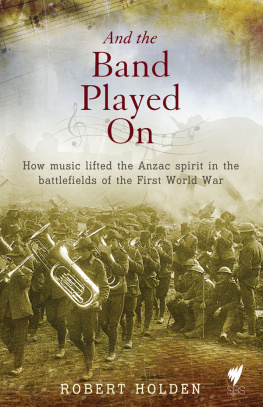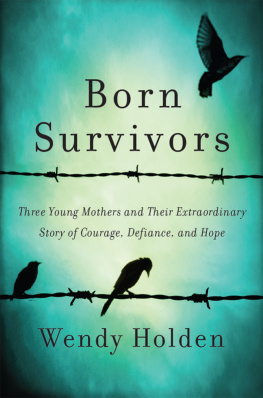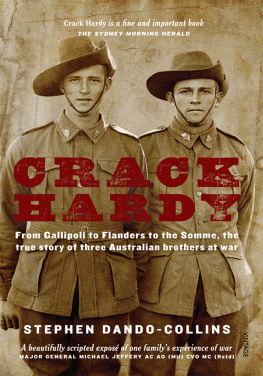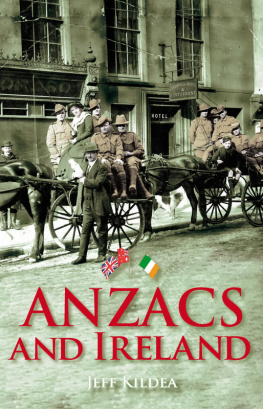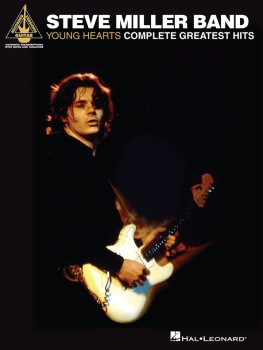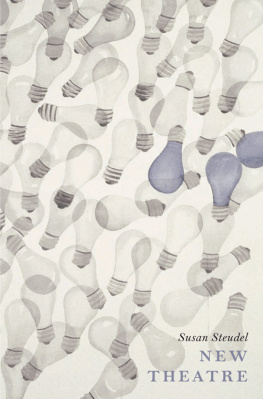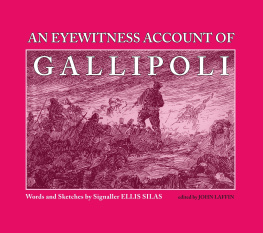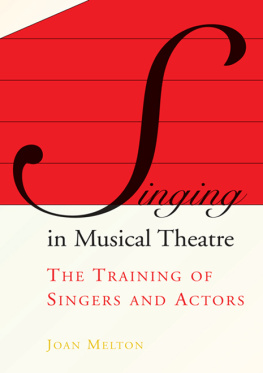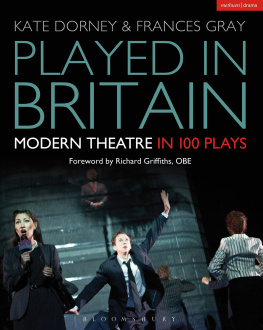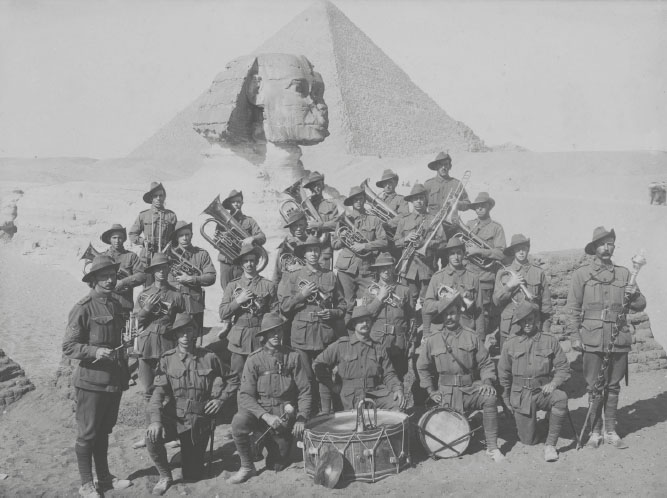
Group portrait of the AIF 1st Battalion Band in Egypt, 1915. The Anzac camp at Mena outside Cairo offered an exotic backdrop. (AWM P01143.001)
Published in 2014 by Hardie Grant Books
Hardie Grant Books (Australia)
Ground Floor, Building 1
658 Church Street
Richmond, Victoria 3121
www.hardiegrant.com.au
Hardie Grant Books (UK)
Dudley House, North Suite
3435 Southampton Street
London WC2E 7HF
www.hardiegrant.co.uk
All rights reserved. No part of this publication may be reproduced, stored in a retrieval system or transmitted in any form by any means, electronic, mechanical, photocopying, recording or otherwise, without the prior written permission of the publishers and copyright holders.
The moral rights of the author have been asserted.
Copyright Robert Holden 2014
A Cataloguing-in-Publication entry is available from the catalogue of the National Library of Australia at www.nla.gov.au
And the Band Played On
eISBN 9781743581742
Photographs supplied by: Australian War Memorial (AWM); The National Library of Australia (NLA); National Library of New Zealand (NLNZ); State Library of NSW (SLNSW)
Cover and text design by Nada Backovic
Cover photograph of the band of the 5th AIF Brigade, led by Bandmaster Sergeant Albert Peagram, marching through the ruins of Bapaume, Western Front, 19 March 1917. (AWM E00426)
And the Band Played On
is dedicated to Jim OMara, foundation member of the New South Wales Military Historical Society.

A scene repeated many times in Australia throughout the war of soldiers being farewelled at a railway station by an army band. This is probably the 2nd Reinforcements of the 35th Battalion who embarked on HMAT Port Sydney on 4 September 1916. (AWM P03796.011)
Contents
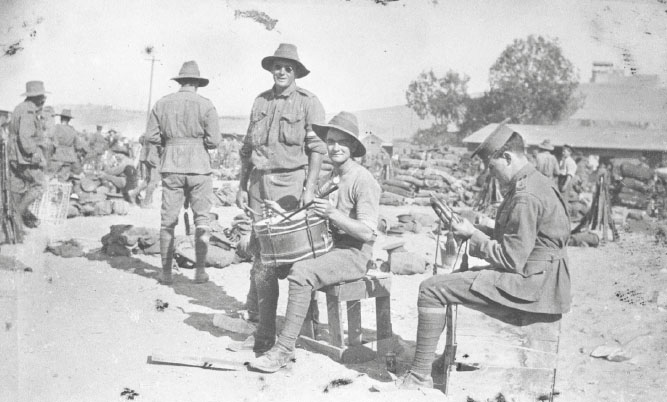
Men of the 3rd AIF Brigade pack up their gear ready to leave for Gallipoli. While one soldier polishes his musical instrument, another provides a musical accompaniment on his kettle drum. (AWM P01436.008)
Cast aside all thoughts of computer-age technology and its resources for entertainment and try to imagine Australian life back in the first decade of the twentieth century. At that time less than a generation had passed since Federation created a new Australia. The country was still enjoying its infancy as the worlds youngest nation. To us, today, a sense of innocence characterises much of the recreation and entertainment that young Australia enjoyed in its first decade as a federated nation. But this innocence was about to be tested by a world war.
This was a society in which families provided much of their own amusement: anyone who could play an instrument, or who had a passable voice, or could recite, was valued as well as expected to entertain. In those days, having a piano in the parlour was the mark of a cultured household. Playing this piano, singing, performing or reciting poetry learned in school elocution classes were a staple of family and community life. Indeed, these acts were often the only entertainment affordable and available to much of the community.
One of the most obvious qualities that these entertainers showed and that todays audiences can both marvel at and appreciate was the speed with which a popular music-hall or vaudeville song circled the world. Before the influx of gramophones and well before radio was introduced into Australian households printed sheet music was the most popular form by which new songs circulated. Songs were printed and reprinted in different editions of sheet music in different countries, with each new edition featuring a local performer or stage celebrity who had introduced this latest hit into their repertoire.
And so, when the men of this young Australia marched off to war many were soon called upon to enlist in another group a band of players and performers who could entertain their fellow soldiers. A typical call was sounded by the Australian Engineers Training Depot in its magazine, Digger. There they were asked: Are you a singing man? Can you elocute? Can you spin a funny yarn? Can you play a mouth organ, concertina or any other instrument? Can you help to entertain in ANY way? Many Diggers answered this new call, which was modestly proclaimed to be the dinkum thing rather than any barnstorming affair. Those who answered this second call to arms became the morale-boosting Anzac entertainers of World War I.
Impromptu entertainments, singalongs, yarns and storytelling and recitations were all part of the homespun repertoire that accompanied these men to war. And the published reminiscences of Lieutenant Eustace Dunn (N19786) allow us to imagine for ourselves the strongly evocative appeal of such gatherings. The young Digger recalled that our happiest evenings were Camp Fire Concerts. And Dunns enthusiasm for these concerts was for their unmistakeably Australian character. As he wrote: During the day, many hefty logs would be leaned against a central key just under the shade of some tall gum-trees. Later that day, a piano would be carried by willing hands from the Mess Tent to the platform; seats would be arranged in a circle [and] the whole camp would gather round as the central pile roared skywards.
Much more recently, the esteemed Australian historian Professor Peter Stanley, of the University of New South Wales, Canberra, paid homage to C.J. Dennis sustained use of musical episodes in the poetic saga of Ginger Mick. Professor Stanley identifies a trajectory that offers a unique insight into the Anzac repertoire: the Anzac bidding farewell to the Australian coast from the deck of his troopship with a rag-time air is later found humming a little song in Egypt. Later still he is howling a fightin tune as he pursues the Turks, crooning a mournful air when burying his dead and, finally, humming a savage song of vengeance.
Inspired by the wartime anecdotes of Dunn and Dennis And the Band Played On seeks to pay homage to the camaraderie, innocent enjoyment and spontaneous entertainment that lifted the spirits of the Anzacs, whether they were under the shadow of the pyramids, in the trenches of the Western Front, on board troopships, recuperating in hospitals or even in POW camps.
So, let the entertainment begin and bring the curtain up!

A rare image of an outdoor vaudeville performance on the Western Front in 1918. In this photograph by Henry A. Sanders an audience of mainly New Zealanders (with officers in the foreground) enjoys the visiting entertainers. (NLNZ 1/2-013182-G)
The bugles of England were blowing oer the sea
J. D. Burns, For England, 1915.
War is noise! Noise which can continue for hours and even days at a time. Unremitting, unrelenting noise. One letter from Lieutenant Dalbert Hallenstein to his parents, dated 13 September 1916, was more than usually descriptive of the Western Fronts assault on his ears:

